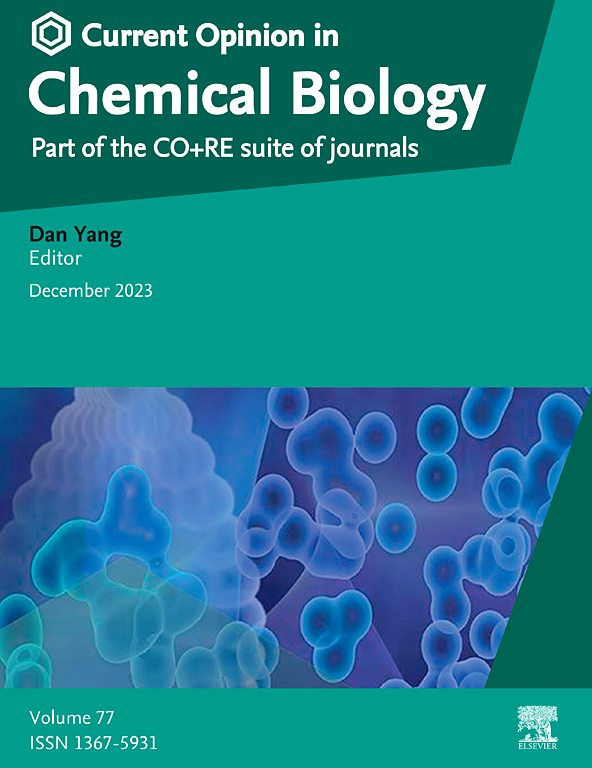利用蛋白质工程开发新的钙传感指标和分子系统。
IF 6.1
2区 生物学
Q1 BIOCHEMISTRY & MOLECULAR BIOLOGY
引用次数: 0
摘要
细胞内钙(Ca2+)参与过多的细胞信号传导过程和生理功能。Ca2+浓度的增加是神经元活动的真正生物标志物,反映了尖峰计数、时间、频率和突触输入的强度。基因编码钙指标(GECIs)的开发是现代神经科学的一个重大进步,它使单细胞分辨率下神经元活动的实时可视化成为可能。这些指标利用钙结合蛋白(如钙调蛋白(CaM)或肌钙蛋白C (TnC))诱导的构象变化。利用蛋白质工程方法,如定向进化,产生了新的GECIs,具有更高的灵敏度、动力学和亮度。值得注意的是,基于钙的整合子的发展,如scFLARE(单链快速光和活性调节表达),将细胞质内Ca2+的短暂升高转化为转录读数而不是光信号。本文综述了蛋白质工程在开发Ca2+浓度变化的新指标和分子系统方面的最新进展。本文章由计算机程序翻译,如有差异,请以英文原文为准。
Development of novel indicators and molecular systems for calcium sensing through protein engineering
Intracellular calcium (Ca2+) is involved in a plethora of cell signalling processes and physiological functions. Increases in Ca2+ concentration are bona fide biomarkers of neuronal activity, reflecting the spike count, timing, frequency, and the intensity of synaptic input. The development of genetically encoded calcium indicators (GECIs) was a significant advancement in modern neuroscience that enabled real-time visualisation of neuronal activity at single-cell resolution. These indicators leverage the conformational changes induced by calcium-binding proteins, such as calmodulin (CaM) or troponin C (TnC). Harnessing protein engineering approaches such as directed evolution yielded new GECIs with enhanced sensitivity, kinetics, and brightness. Notably, the development of calcium-based integrators, such as scFLARE (single-chain fast light- and activity-regulated expression), convert transient raises in cytosolic Ca2+ into a transcriptional readout rather than an optical signal. This review summarises the latest efforts in protein engineering to develop new indicators and molecular systems to sense changes in Ca2+ concentrations.
求助全文
通过发布文献求助,成功后即可免费获取论文全文。
去求助
来源期刊

Current Opinion in Chemical Biology
生物-生化与分子生物学
CiteScore
13.30
自引率
1.30%
发文量
113
审稿时长
74 days
期刊介绍:
COCHBI (Current Opinion in Chemical Biology) is a systematic review journal designed to offer specialists a unique and educational platform. Its goal is to help professionals stay informed about the growing volume of information in the field of Chemical Biology through systematic reviews.
 求助内容:
求助内容: 应助结果提醒方式:
应助结果提醒方式:


